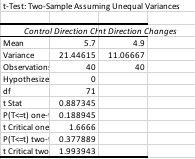Lab 13: Ciliate Isolation and Characterization
Rationale: The purpose of this experiment was to be able to perform a soil sedimentation test and to find ciliates in either our own soil sample, or the samples provided.
Procedure:
- Soil Sedimentation Test
- Retrieve the tube from the previous lab that contains the soil and water.
- Using a ruler, measure the amount of sand, silt, and clay using centimeters as the units of measure.
- Add the amounts together to determine the total.
- To find the percent composition of each component, take the individual components amount, divided by the total, and multiply the result by 100.
- Ciliate Isolation
- Observe the original soil sample under a dissecting microscope.
- If no ciliates are found, use a micropippetor to extract solution from the sample provided by the professor.
- Place the drop on a concavity slide and observe the slide under a compound microscope.
- Photograph or record any ciliates found.
Data:
| Soil Sedimentation Test Results | Amount | Percent Composition |
| Clay | 0.1 cm | (.1/1.7) x 100 = 5.88% |
| Silt | 0.6 cm | (.6/1.7) x 100 = 35.3% |
| Sand | 1 cm | (1/1.7) x 100 = 58.8% |
| Total | 1.7 cm |
Storage: After completing the lab, I washed and bleached the concavity slide I used, as well as powered off and unplugged the microscopes I used. I covered them and returned my soil samples in the petri dish and tube back to their places.
Conclusion: From this experiment, I was able to find ciliates in the samples provided in the lab. I was not able to classify two of them, however I believe the third one I saw may be Didinium. I was also able to conclude that my soil sample is sandy loam, based on the results received from the sedimentation test. In the future, I hope to find more ciliates in samples and be able to classify ciliates with complete certainty.
























 at 40x
at 40x









